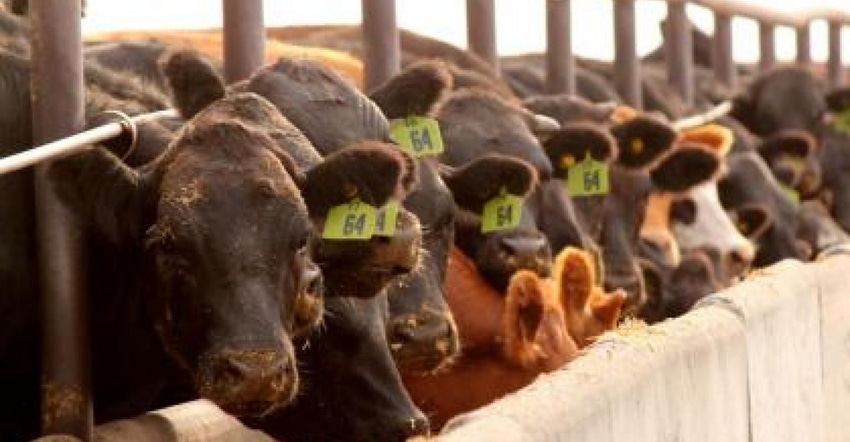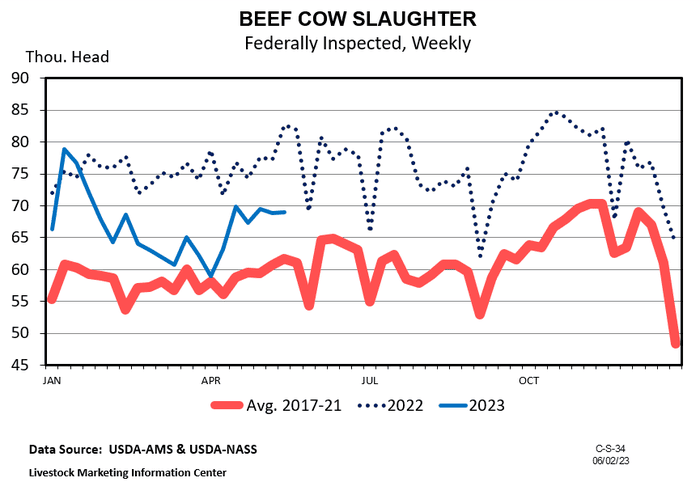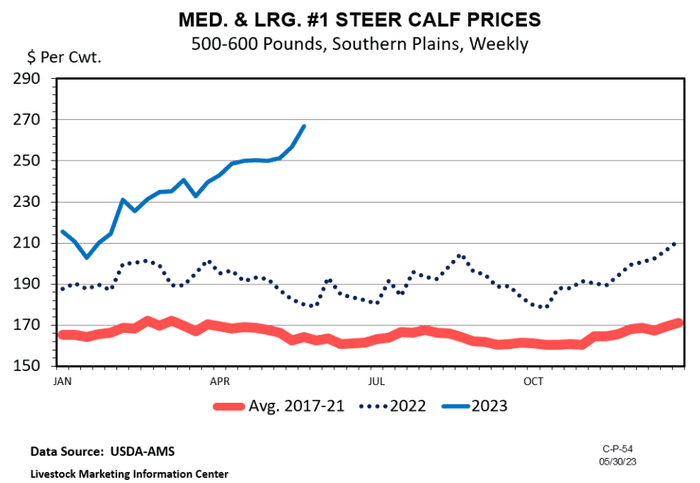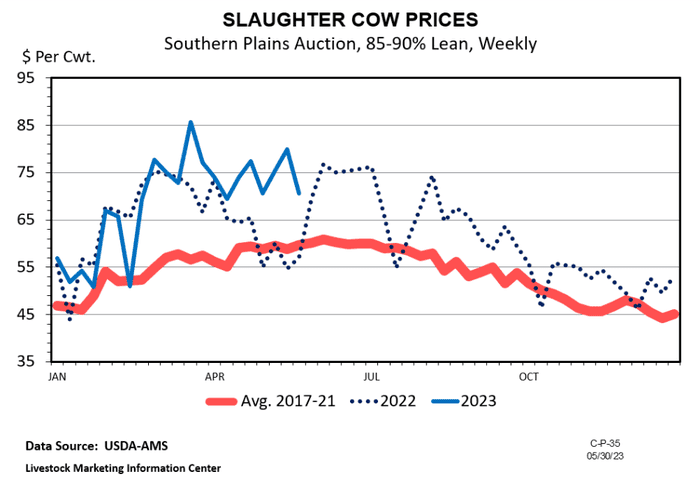June 8, 2023

By Kenny Burdine, University of Kentucky
Last week, we talked about pasture conditions and specifically mentioned the Southern Plains and the Southeast. A quick look at the drought monitor reveals increasingly dry conditions in the Eastern half of the US and the region of Kentucky I call home is now classified as “abnormally dry.” I can certainly speak to how badly we need a good rain and I know that rings true for many producers. Weather is always a concern during summer, and this certainly bears watching in the coming weeks.

As I cringe thinking about the possibility of another widespread drought, I am reminded of how long lines at auction facilities made national news last year as conditions worsened through summer. A lot of producers were forced to move cows due to limited forage growth. By the end of the year, 389 thousand more beef cows were harvested in 2022 than in 2021, which was an increase of about 11%. Beef cow slaughter through the third week of May can be seen in the chart above. Thus far, it is very clear that the pace of beef cow slaughter is well below that of 2022. In fact, for the first 20 weeks of the year, beef cow slaughter is down by about 12% from last year.
I use year-over-year comparison a lot, as do most economists. They provide a simple way to compare trends from one year to the next. But they can be misleading at times, and this is especially true when one of the two years being compared is a significant outlier. Clearly, beef cow slaughter in 2022 was an outlier so any comparison to last year must be made with that in mind. For a different perspective, one might compare beef cow slaughter for the first 20 weeks of 2023 to the first 20 weeks of 2021. It might surprise some people to know that through the third week of May, we have actually harvested 1.8% more cows this year than we did during the same period in 2021. This speaks to what an anomaly 2022 likely was and paints a little different picture of 2023. One should also remember that there are almost 2 million fewer beef cows in the US now than there were in 2021, so the fact that slaughter rates are higher is noteworthy.
While I thought it was important to put cow 2023 beef cow slaughter in perspective, I also think it is a bit too early to make much of harvest levels. Culling decisions are made at the individual producer level and national slaughter levels are a culmination of all those decisions. Production costs, calf prices, and cull cow values all play a role in determining how hard the herd gets culled. But weather is typically the biggest driver and the coming months will be crucial in those decisions, just as it was last year.


You May Also Like




